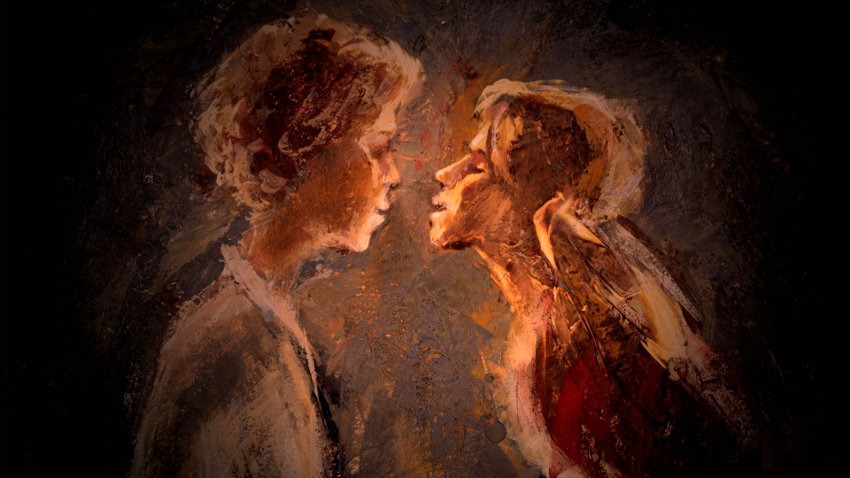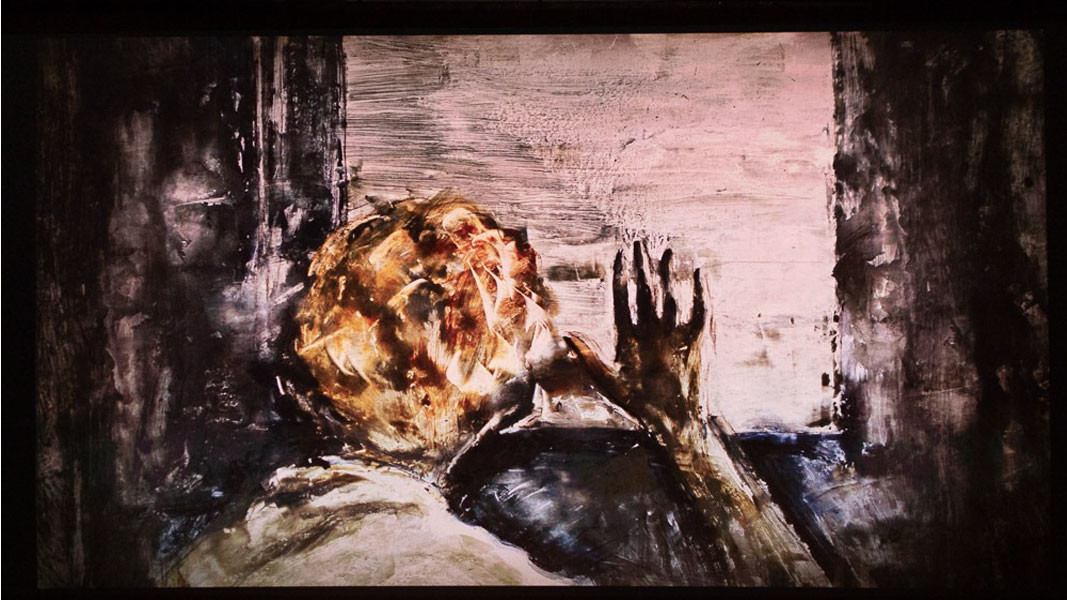Nearly a decade in the making (due to the transient nature of its animation technique), Theodore Ushev’s larger-than-life cinematic masterpiece The Physics of Sorrow arrives just in time for your ‘Best of the decade’ and ‘Best of 2019’ movie lists.
The Physics of Sorrow is a thrilling achievement in terms of animation and storytelling. Based partly on the labyrinthine bestseller, that is itself based partly on the Economist’s 2010 article, the one that names Bulgaria ‘the saddest place in the world’, Ushev’s mesmerizing animation short brings the very essence of Georgi Gospodinov’s ambitious book to life.
Тhe movie opens with the monologue of an old person (narrated by Donald Sutherland and Rossif Sutherland) gifted with the curse of radical empathy who has lost touch with himself. He takes a trip down memory lane, or rather a labyrinth, reliving an emotionally intense childhood in communist Bulgaria and world-weary adulthood as an immigrant in Canada, in an effort to make sense of his identity.

In a medium where a picture is worth a thousand words, every one of the 15 000 hand-painted pictures making up the 27-minute short is crucial to the visualization оf the hero’s intimate journey. Here, luggage, an object meant to take us places nowadays is repurposed for our protagonist’s emotional baggage needs, a sign of our time and a jarring side effect of our obsession with time.

Like Theodore Ushev’s previous short, Oscar-nominated The Blind Vaysha, The Physics of Sorrow proves once more that animation is one of the most exciting and groundbreaking mediums of storytelling and filmmaking nowadays. The encaustic hot wax painting technique, developed by Theodore and Asen Ushev, used for the first time here as an animation technique, gives the movie scale, depth, and intimacy.

The Physics of Sorrow is a labyrinthine movie about a great many things – a lost generation, as well as our generation. It is set in a great many times – from the beginning of our time to the greatest event of our time, the Apocalypse (which will sadly go down in the history of our time ‘unreported’). It is a time capsule, which tells a father-son story or several such about the price of empathy, apathy, and our fervent search for meaning and purpose.
Disclaimer: All rights belong to their respective companies and owners. All media is used for educational purposes only. This language isn’t even my native language.

Great recap, will watch this now… Just now finished ”The Platform” great opposite Netflix movie (Spanish – Translated) – outlining what makes un unhuman…
LikeLike
Hey, thanks for the feedback. A lot of my friends knowing how much I love ‘Parasite’ have suggested watching this, as well as ‘High-Life’. I am not sure ‘The Physics of Sorrow’ is available on any platform yet but I warmly recommend watching it (as you already know) when it gets a wide release.
LikeLike